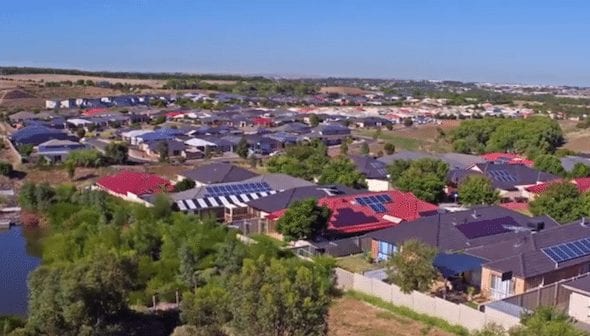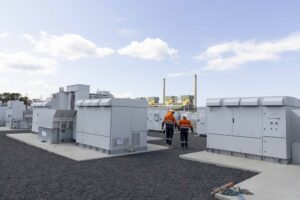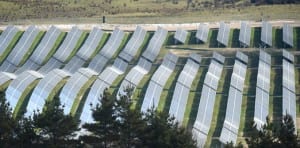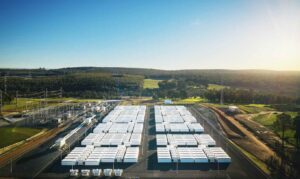AGL Energy has flicked the switch on its South Australian virtual power plant, a controlled network of home and business battery storage systems that aims to both cut consumer electricity costs and help manage grid stability in the state.
The $20 million, ARENA-backed project was formally announced in August last year, with plans to combine the stored solar power from 1000 homes across Adelaide to effectively create a total of 7MWh of storage capacity and 5MW peaking capacity.

At a press conference on Thursday – which was overshadowed by a toe to toe stoush between South Australian premier Jay Weatherill and federal energy minister Josh Frydenberg – AGL chief Andy Vesey said the first phase was “now live”, with 60-plus batteries successfully linked by Sunverge’s cloud-connected smart software.
According to AGL, the trial has so far produced more than 300kW of battery capacity, with more than 200kW of associated solar capacity – which translates to a peak output of more than half a megawatt. The VPP, meanwhile, has so far stored and delivered more than 10,000kWh to date.
“Our South Australian VPP demonstration is a practical example of the new energy future,” Vesey said. “What we are currently seeing is the ability to simultaneously aggregate the battery discharge, which is a necessary step towards full orchestration capability.
“This also demonstrates the capability of the VPP to provide grid support services, including peak demand management and frequency control services, and we’ll share these results in our first public report in May this year,” he said.

Ultimately, AGL expects the VPP to deliver multiple benefits for multiple groups, including for customers by reducing their energy bills by an estimated $500 a year. Households participating in the trial also had the benefit of a heavily subsidised battery storage system.
For the network, the VPP is expected to reduce the need for capital investment to upgrade infrastructure, while for AGL, the stored rooftop solar adds another source of generation to the gentailer’s mix.
Vesey said the Adelaide trial, which received a $5 million grant from ARENA, would also demonstrate the value of batteries in Australia’s energy transition – particularly as an alternative to thermal plants in balancing renewable generation on the grid.
“A key point to remember is that while individual customers benefit, their participation can benefit their collective community, by using the stored energy in their battery rather than drawing from the grid, which supports their local network and community,” he said.
ARENA CEO Ivor Frischknecht said that by supporting early-movers like AGL and Sunverge, the Agency was helping to fast-track the development of new Australian industries such as the growing battery storage sector.
“This world leading project shows Australia is at the forefront of renewable energy innovation and is actively pursuing solutions for a smooth transition to a renewable energy future with ARENA’s support,” Frischknecht said.
“This trial will pave the way for more virtual power plants to be added to our networks, increasing energy security and reliability by enabling networks to capture, store and deliver solar direct from customers’ roofs, rather than relying solely on grid infrastructure.”
Vesey has a similar vision, outlined last year in plans to extend the VPP model beyond South Australia to other, larger-scale applications.
“We would love to be able to – and we probably will, watch this space – do it in institutional buildings… as well, because they’re different,” he told the Disruption and the Energy Industry conference in Sydney last August.
“And we’re looking to do this on a manufacturing scale. We want to make sure we have the ability to deploy these all along the grid, where they have value.”
It is anticipated installation of all 1,000 batteries in the SA VPP trial will be completed by the second half of 2018.








